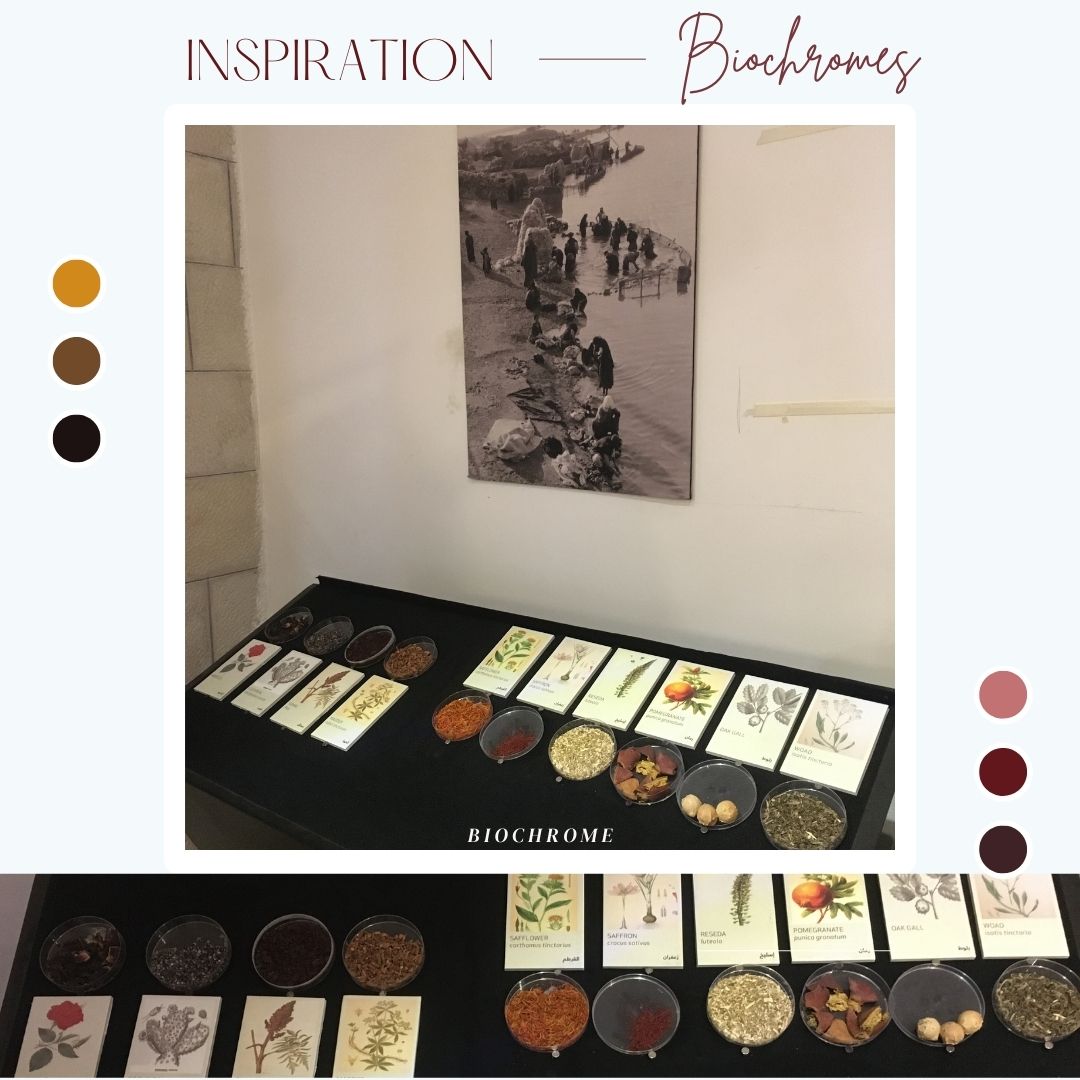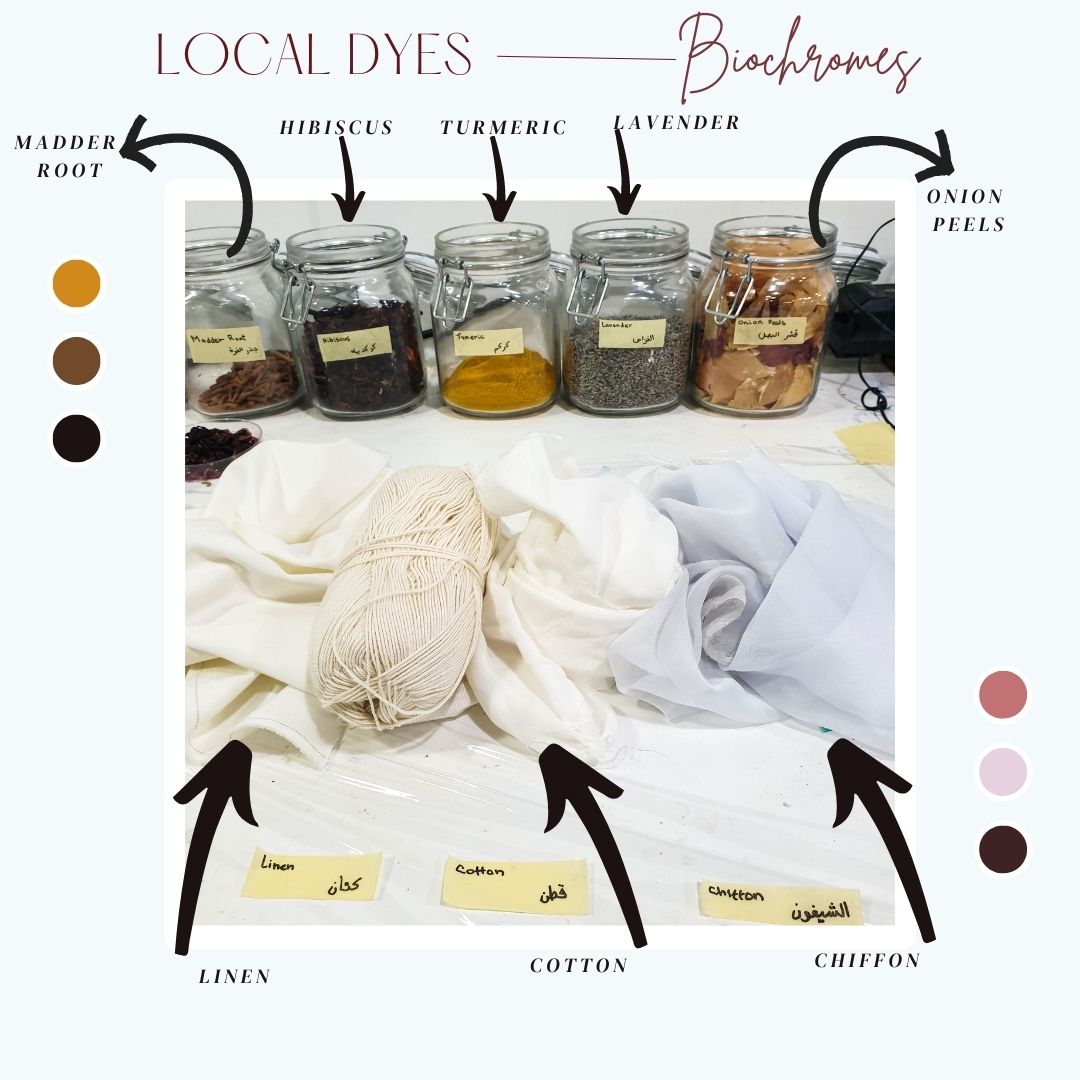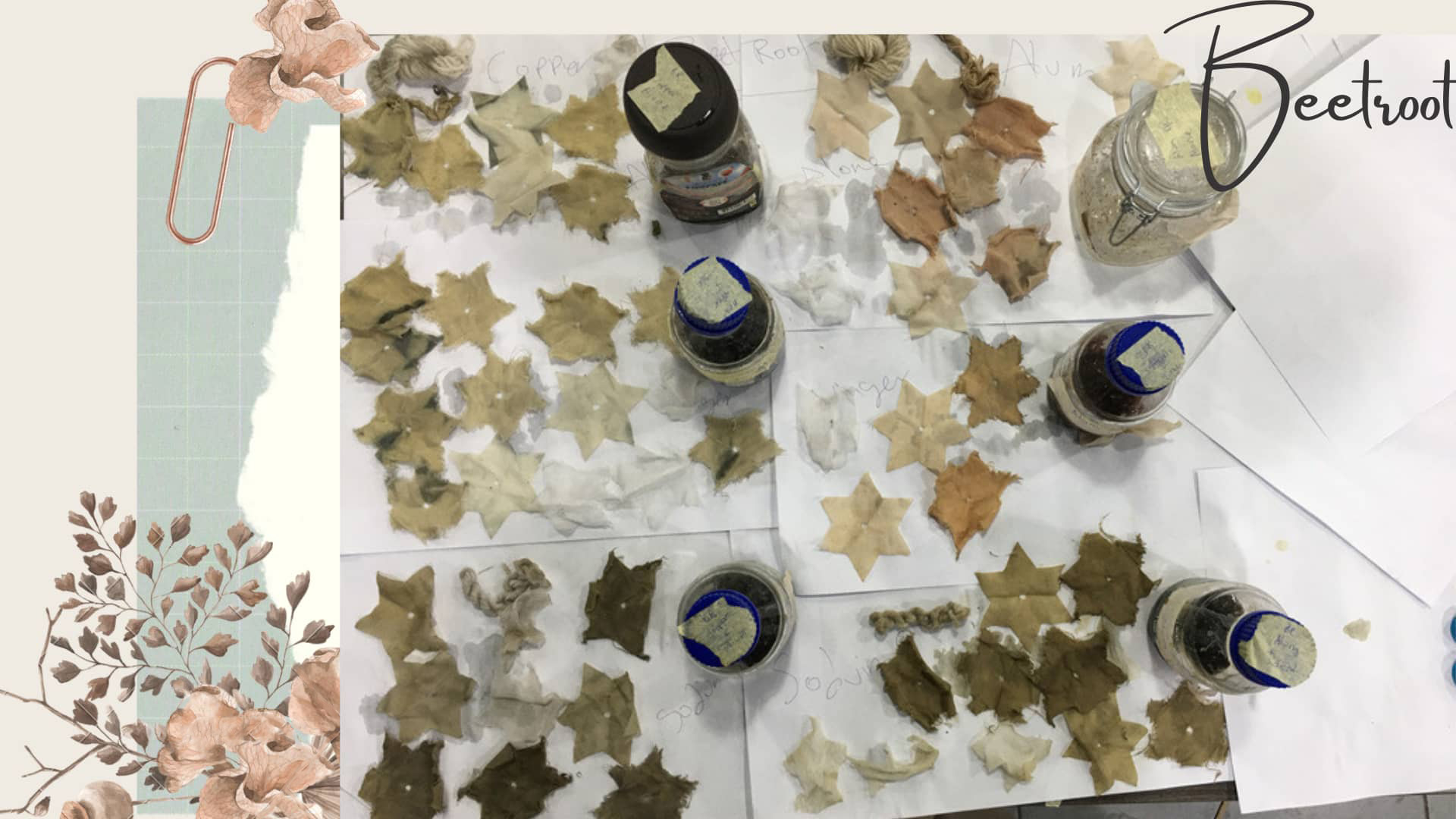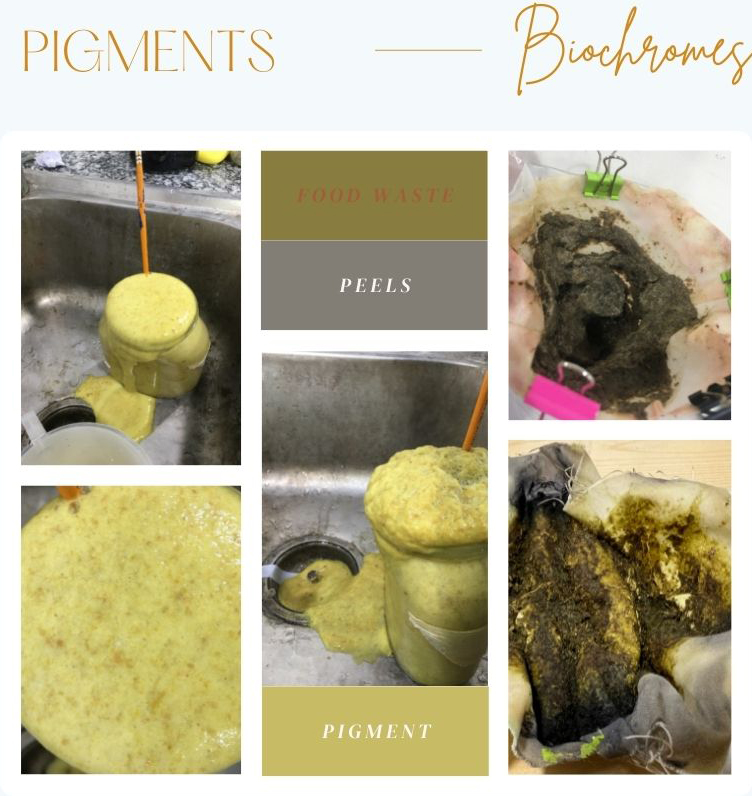4. Biochromes
Exploring colouring alternatives to the current ones. Bridging craftsmanship techniques and technology, to explore alternative colour sources and their processing. Ranging from plant based, insect base and bacteria based pigments.
Inspiration
Arabic calligraphy

Came across this Tiraz centre/ museum that shows natural dyes used locally to dye traditioned clothing and yarns used for embroidery
So I was inspired from the local ingredients I can use like pomegranate and so... Also I had in mink to use some of the natural inks produced to write some arabic calligraphy because i felt its a nice art reflecting my culture!
Initial exploring and experiments
Made a summary of the process after classifying the ingredients/Materials.
(Dyes collected materials + mordants + modifiers)

here we tried collecting few things from the surrounding gardens and places to experiment with as a kick start (grass, different flowers, onion peels, Hibiscus)


We came across lots of locally available dye sources we wanted to experiment and play with so we were boiling each and ever source we can possibly find for fun experiments

and for the fabric/yarns sources we had 3 main the Linen, Cotton and Chiffon
Fabric preparations

Individual assignment
i did further research on both Pomegranate and Beetroot below:
- Pomegranate (i did 4 main categories experimenting on it based on Variables)
- General (Alum , Copper with iron each)
- Peels (Alum , Copper)
- Red seeds (Alum , Copper)
-
White seeds (Alum , Copper)
-
Beetroot
- Peels (Alum , Copper, Alum with vinegar as modifier, Alum with sodium as modifier, Copper with vinegar as modifier, Copper with Sodium as modifier) but this time i tried boiling it with the modifier not just add it as last step (firstly boil the peels for a dye then boil again with fabric + mordant + modifier all together)
Pomegranate




tried red seeds with: 1. ethanol 2. water
to check with variable gives me condensed color which in this case was ethanol so you would see later the third option which is red pomegranate seeds the only one I soaked in ethanol the night before not in water. However the Peels and white seeds were soaked in water for 2 days



Beetroot
in this experiment I decided I do not wanna die regular square fabrics anymore so i designer these pieces inspired from the stars of Islamic pattern I did in the previous assignment where i took only the abstract of the star of the Islamic pattern with a whole inside so i can later on attach it to a modular/seamless full piece and nevertheless it looks lie organic leaves of trees like grape trees




100 g beetroot dye bath division with different modifier for the second boil:
-
100g Beetroot + copper ALONE + Fabric
-
100g Beetroot + copper + vinegar+ Fabric
-
100g Beetroot + copper + sodium + Fabric
-
100g Beetroot + Alum ALONE + Fabric
-
100g Beetroot + Alum + vinegar + Fabric
-
100g Beetroot + Alum + sodium + Fabric

-
12:22 o'clock added Fabric Animal after rinse to 2 ltr of water + 1 table spoon of sodium carbonate
-
12:26 o'clock Added sodium carbonate 2 spoons to 4 ltr of water sand stir
-
12:31 o'clock Added 46.2 of plant based fabric + stir
Total weight of fabric plant + Animal 8.6 + 46.2 = 54.8
divide them by 2 to get 27.4 each to put in 3 ltr each
**15% of WOF Alum = 4.11 g
7% of WOF Copper = 1.918g**
- 03:16 in Alum + water + fabric added
-
04:16 softwaresupport
-
4:29 in Copper + water + fabric added
- 5:29 out
Laser cut
this section i was laser cutting a DIY stand to store Bath-dye and Ink for future reference.

Added to that I laser cut the fabrics I wanted to dye using beetroot dyebath in a shape of a star (inspired from islamic pattern) results of all beetroot divisions with all modifiers after second boil for one hour and rinse:

and here final picture after they dried and how the color changed so this is the final color i got regarding each category.

Pigments and Inks
Making the pigments : recycling the leftover of the dye bath -after heating the dye (Pomegranate peels dye bath + modifiers) in a glass bottle (adding ethanol might help getting better pigment that what I got) Start with 10 grams of alum and 5 grams of Sodium Bicarbonate. Each one is mixed with boiling water separately. Firstly add slowly the alum then the Sodium Bicarbonate Mix to bring air inside to encourage material separation. Filter via coffee filter then let it dry

Reserving samples of each Bath-dye and Ink for future reference + Labeled them and hanged on a DIY laser cut stand

Arabic calligraphy with Inks
Beetroot Ink with Arabic calligraphy

In order to produce this ink I recycled the dye bath with ethanol then used it with a bruch to write this arabic calligraphy on a cotton piece of paper

Files to download
Laser cut stars Pattern for fabrics pre dying